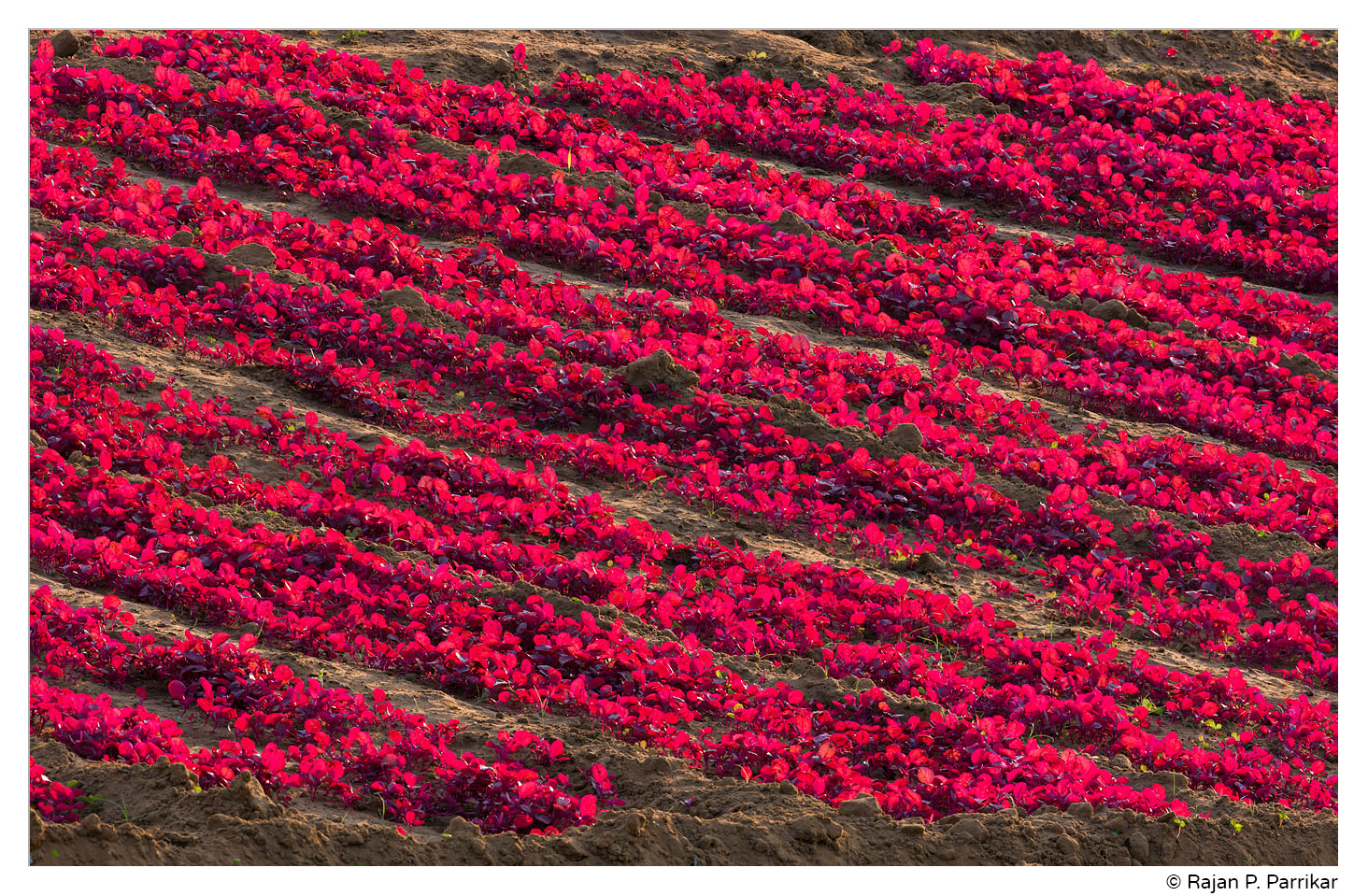Goodness in red.
The Goan love of fish is well known. Not so well known is our fondness for tambdi bhaji (lit. red vegetable).
Fish curry, rice, and tambdi bhaji complete the trifecta of the ideal Goan meal. Capped by a relaxing siesta, it is the recipe for a good, healthy, and productive life. In Goan homes, this leafy vegetable is cooked simply with freshly grated coconut, green chilli and salt.
Commonly referred to as Red Amaranth or Blood Amaranth, tambdi bhaji is known to botanists as Amaranthus Cruentus. The cultivation of tambdi bhaji and other forms of traditional Goan produce is now under severe stress with the widespread supplanting of fertile fields with ugly concrete.
These images were taken in Taleigao. In the first two, rows of tambdi bhaji are backlit by the low sun. In the next post, we shall meet the men and women who give life to this soil despite all odds.

Carpet of Red
5DS, 100-400L IS II

Backlit
5DS, 24-70L f/2.8 II

Tambdi Bhaji (Red Amaranth) in the fields of Taleigao, Goa
Panasonic LX100 II





Tambdi bhaji photographs speak for themselves as one pities the last generation of farmers of Taleigao who are enveloped by the tentacles of fast spreading Urban octopus. I have always stressed on their effective model of micro-irrigation and sustainable organic farming and they toil to market the fresh farm produce near the roads and it is agonizing to see people bargaining for even five ₹.
Amaranthus is an easy to cook tasty vegetable but it must be washed very well before preparation.
This is an useful site for Amaranthus farmers. https://www.asiafarming.com/amaranth-farming
We find at least 10-12 different Tambdi bhaji varieties locally. Government would finish this diversity by pushing some hybrid seeds. I enjoyed visual anthropology of Tambdi Bhaji and congratulate Dr. Rajan for capturing the serene landscape and natural colours in their pristine “avatar”.
Thank you, Professor Kamat, for adding your thoughts.
Fascinating story and photos. I have eaten amaranth grain, but didn’t know that the leaves were also edible (and so beautiful).
Thanks, Bob. I need to try the grain sometime.